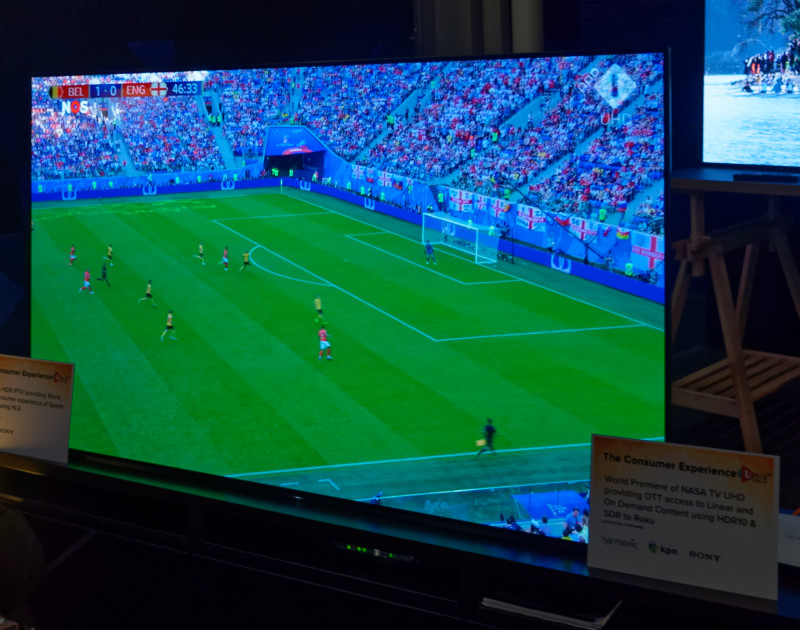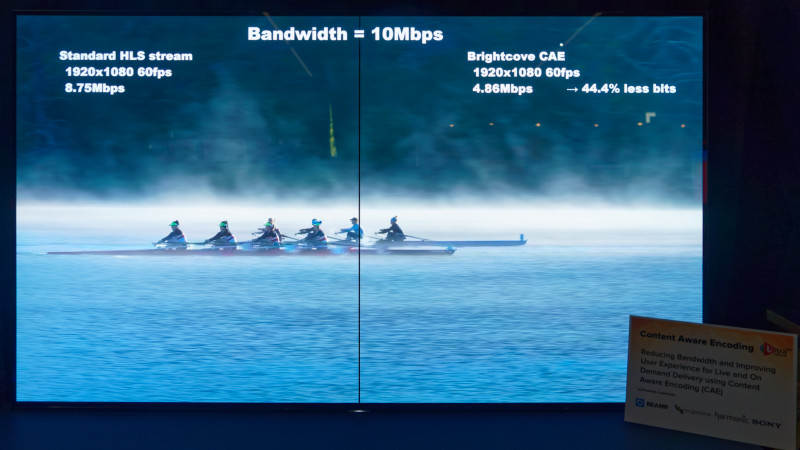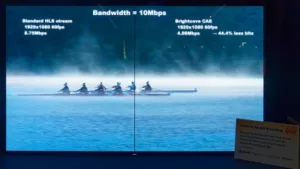The UltraHD Forum was at the event to talk about the developments in UltraHD and the development of the Phase B recommendations. We spoke to Ian Nock of Fairmile West, which works with the forum.
First, Nock told us that ‘It’s here’ and one of the demonstrations at IBC was a demonstration of UltraHD content shown from the World Cup. Broadcasters are transmitting content that is working well with consumer TVs. “Well, that’s the case”, Nock said “where the introduction is managed. The UK managed the process and was very conservative in what it tried to achieve and the result was a very good World Cup in UltraHD. Other countries didn’t get organised or coordinated and UltraHD didn’t work well”.
 Lots of people saw the World Cup in UltraHD – it’s here! Image:Meko
Lots of people saw the World Cup in UltraHD – it’s here! Image:Meko
The Forum runs plug tests and there are still occasional ‘glitches’, usually because of different interpretations of the associated standards, but these are going away as better guidelines are developed. These have been included as annexes to Phase A. Phase A is now at V1.5 which adds:
- Descriptions and workflow diagrams of four “real world” deployments of UHD / HDR services for marquee television events (major sports tournaments, parades, etc.)
-
Synergies between Phase A and Phase B technologies. (Phase B technologies are independent, incremental additions to the foundation of Phase A technologies.)
-
Important new standards that support Phase A workflows, including SMPTE ST 2108-1 for carriage of HDR metadata over SDI interfaces.
- Clarification between “HDR10” and “PQ10” to ensure alignment with other new SDOs’ specifications such as SCTE’s.
- More detail about two-step forensic watermarking methods.
The two phases are time-based, A comes before B, but B also builds on the A base platform. It adds HFR, dual layer HDR, dynamic HDR metadata and next generation audios.
Some countries are really going strongly for UltraHD and South Korea has said that it will switch of HD in 2027. 10% of the ATSC content in the country is being broadcast in UltraHD. All the World Cup soccer matches were captured in UltraHD and 270 broadcasters carried the content, 24 of them with HDR. 37 cameras were used at each event and it was generally considered that while the HDR was not always perfect, the SDR always looked worse than the HDR.
Dynamic metadata support is still being developed (we heard that separately from our conversation with Nock that at some of the plugfests, there were very different and incomplete implementations, some which did not work well, while others only responded to some parts of the metadata and not others). At the event, the Forum had some really, really good content shot at the rowing competition in Berlin, where HFR/HDR UltraHD content was captured. Paul Gray of IHS Markit, with whom we looked at some of the content, pointed out that the high frame rate meant that you could see how the rowers ‘flicked’ the oar at the end of the stroke and this might not have been visible using lesser quality.
Nock was very excited by the demo as a feature had been put in to allow the TV to switch between static and dynamic metadata, so that images could be easily compared. Under those conditions, it was clear why dynamic metadata should deliver a much better result.
 Content adaptive compression can be more efficient. Image:Meko
Content adaptive compression can be more efficient. Image:Meko
Another interesting demonstration showed how content-aware encoding can improve the efficiency of UltraHD content and deliver the same visual performance at lower bitrates.
Analyst Comment
The demonstration of UltraHD with 100Hz and HDR was, I think, more impressive than the 8K demonstration by NHK – it was very dynamic. (BR)

